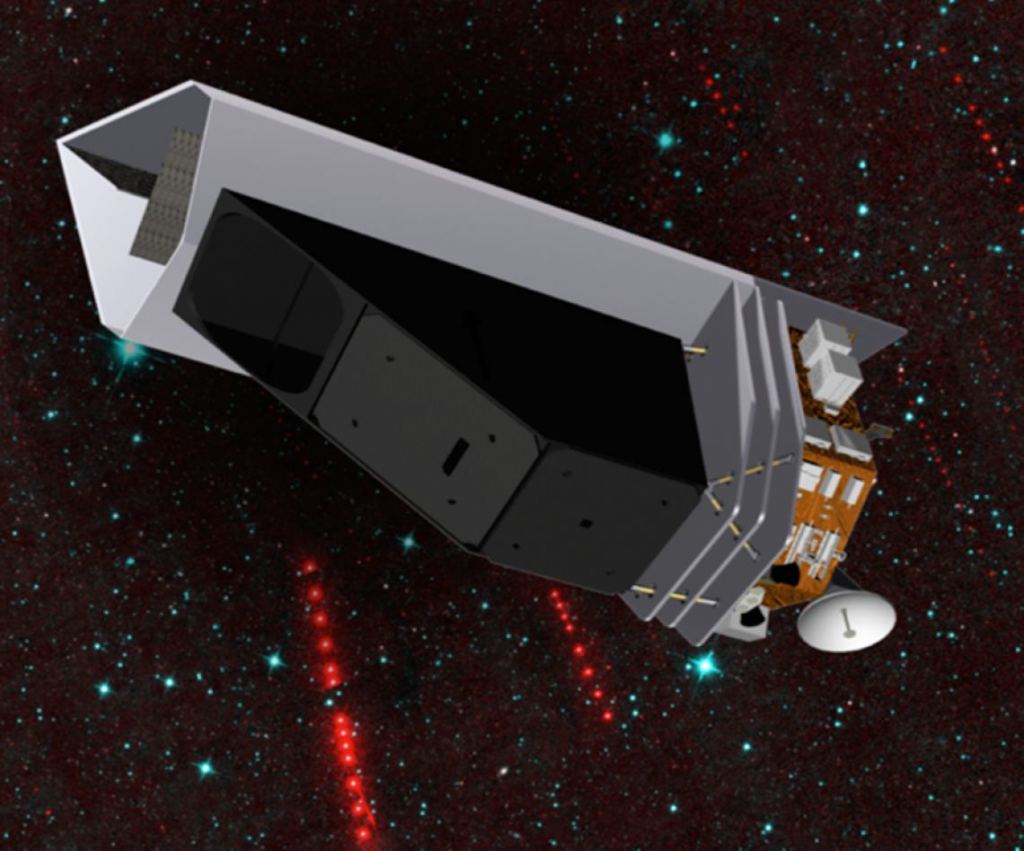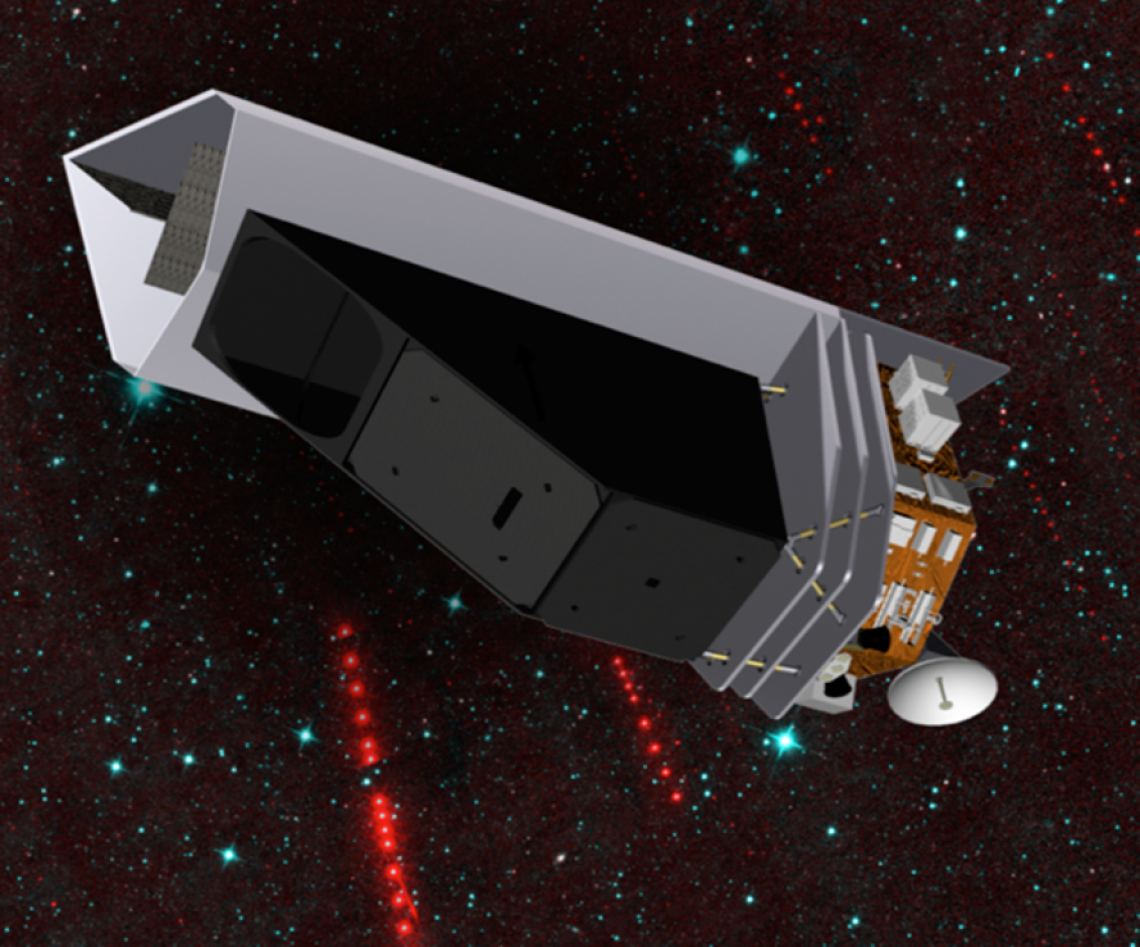A lot of the threats humanity faces come from ourselves. If we were listing them, we’d include tribalism, greed, and the fact that we’re evolved primates, and our brains have a lot in common with animal brains. Our animalistic brains subject us to many of the same destructive emotions and impulses that animals are subject to. We wage war and become embroiled in intergenerational conflicts. There are genocides, pogroms, doomed boatloads of migrants, and horrible mashups of all three.
Isn’t humanity fun?
But not all of the threats we face are as intractable as our internal ones. Some threats are external, and we can leverage our technologies and our knowledge of nature in the struggle against them. Case in point: asteroids.
NASA can’t do much about our own destructive impulses, but they are definitely in a position to help protect us from asteroids and comets that pose a threat. Those objects are called Near-Earth Objects, or NEOs. In 2005, the US Congress passed the NASA Authorization Act of 2005.
Among its requirements, it obligates NASA to raise its game when it comes to detecting NEOs. It states in part that NASA should “…detect, track, catalogue, and characterize the physical characteristics of near-Earth objects equal to or greater than 140 meters…” It also directs NASA to undertake a survey program that will “…achieve 90 percent completion of its near-Earth object catalogue (based on statistically predicted populations of near-Earth objects) within 15 years after the date of enactment of this Act.”
NASA’s made progress in this area, and so far has found about 40% of objects equal to or greater than 40 meters. And they’re about to get a new tool to help complete their survey. It’s called the NEO Surveyor and it’s an infrared space telescope designed to find, track, and characterize NEOs. The University of Arizona will lead this new mission, with Amy Mainzer in charge. Mainzer is an expert in infrared astronomy and a professor in the University of Arizona’s Lunar and Planetary Laboratory.
“Even asteroids as dark as a chunk of coal won’t be able to hide from our infrared eyes.”Professor Amy Mainzer, University of Arizona.
NASA has approved only the preliminary design phase at this stage, so many details could change between now and when the spacecraft is scheduled to be deployed sometime in 2026. But here’s what we know so far.
The spacecraft will perform its survey in infrared. Earth-based telescopes have found most of the NEOs that have been catalogued so far, but finding the remaining ones in visible light is extremely difficult. It would take decades to do so, according to a press release. Searching for them in the infrared will be much more efficient, but that can’t be done from Earth. It takes a spacecraft to do it.
Infrared observation is critical to the mission because of what happens to NEOs when they approach the inner Solar System. They’re warmed by the Sun, and that heat is what the NEO Surveyor will detect. Even the blackest, most non-reflective of asteroids will be visible in infrared. In a press release Mainzer said, “Earth-approaching asteroids and comets are warmed by the sun, and they give off heat that the NEO Surveyor mission will be able to pick up. Even asteroids as dark as a chunk of coal won’t be able to hide from our infrared eyes.”
 An artist’s illustration of the NEO Surveyor, a space telescope designed to detect and catalogue NEOs. Image Credit: NASA/JPL
An artist’s illustration of the NEO Surveyor, a space telescope designed to detect and catalogue NEOs. Image Credit: NASA/JPL The artist’s illustration above gives us an idea of how NEOs will appear to the NEO Surveyor. Their faint heat signatures will appear as a streak of dots which are shown in red in this image, for our convenience. Thus, they’ll appear distinct from background stars, which are coded blue in this image. Hunting NEOs in infrared will also allow scientists to determine not only the position and trajectory of the objects but also their sizes. And it’s their sizes that determine how devastating they could be if they strike Earth.
“Impact energy depends heavily on how big an individual asteroid is, so the infrared observations delivered by NEO Surveyor will greatly expand our ability to predict the behavior of some of Earth’s neighbors that could be on a trajectory to pay us a surprise visit,” Mainzer said.
The NEO Surveyor will build on the success of the Near-Earth Object Wide-Field Infrared Sensor (NEOWISE.) NEOWISE was a predecessor to the NEO Surveyor. It was a four-month mission extension to the WISE mission, undertaken once the mission ran out of coolant. Professor Mainzer is NEOWISE’s lead scientist.
 This graphic shows asteroids and comets observed by NASA’s Near-Earth Object Wide-field Survey Explorer (NEOWISE) mission. Credit: NASA/JPL-Caltech/UCLA/JHU
This graphic shows asteroids and comets observed by NASA’s Near-Earth Object Wide-field Survey Explorer (NEOWISE) mission. Credit: NASA/JPL-Caltech/UCLA/JHU The University of Arizona will provide overall mission management, including designing and building the infrared detectors themselves. The University will also monitor the mission and manage the investigation and the overall operations of the team. The U of A has a successful track record in this regard, including their participation in the OSIRIS-REx mission and their management of the HiRISE (High-Resolution Imaging Science Experiment) camera on the Mars Reconnaissance Orbiter (MRO.)
“The university’s leading roles in infrared astronomy and asteroid science make it uniquely suited to leading this next-generation infrared sky survey,” said Elizabeth “Betsy” Cantwell, senior vice president for research and innovation at the University of Arizona.
Professor Mainzer and her team will provide eight infrared detectors for the spacecraft’s camera. Each of the eight will provide 4 megapixels of resolution. That’s enough resolving power to let the NEO Surveyor spot the tiny spots of infrared light coming from NEOs. As part of their role, they’ll test various infrared detector assemblies and select the best eight for the telescope.
Like its big brother, the James Webb Space Telescope (JWST), which is also an infrared ‘scope, the NEO Surveyor will use a heat shield to shelter it from the heat of the Sun. For infrared detectors to function well, they must operate at a frigid temperature. The shield will deal with the Sun’s heat as the 6-meter (20 ft.) spacecraft follows an orbit that takes it outside the Moon’s orbit. The observatory will continuously scan the sky. In particular, it’ll carefully observe areas near the Sun, where asteroids on potential Earth-bound trajectories tend to originate.
Of course, merely finding them isn’t good enough. One of the primary ideas behind the NEO Surveyor is advance warning. “With NEO Surveyor, we want to spot potentially hazardous NEOs when they’re years to decades away from possible impact,” Mainzer said. “The whole idea is to provide as much time as possible to develop mitigation efforts that enable us to push them out of the way.” NASA’s already working on potential mitigation efforts for dangerous asteroids, especially with its Double Asteroid Redirection Mission, or DART mission. DART will test a kinetic impactor as a way to redirect dangerous asteroids away from Earth.
NASA can’t save us from ourselves. But they may be able to help protect us from nature. Who knows? Maybe their efforts will give humanity the time we need to sort ourselves out down here on Earth. As Steven Pinker makes clear in his book “The Better Angels of Our Nature: Why Violence Has Declined,” humanity is waging fewer and fewer wars, and the ones we do wage are becoming smaller and more contained.
It would be a shame if an asteroid ended humanity, and even life on Earth, while we were still struggling to become reliably peaceful. If NASA can play its part, maybe we’ll make it.
